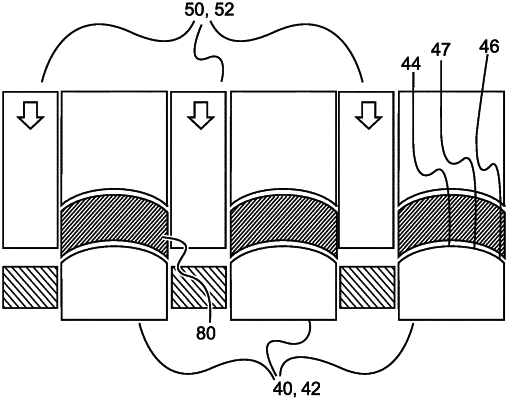| CPC B23P 15/40 (2013.01) [B26B 19/3846 (2013.01); B26B 19/3893 (2013.01)] | 14 Claims |

|
1. A method of forming a plurality of teeth of a cutting blade or guard, the method comprising:
a) providing a blank of material, the blank having an upper outer surface and a lower outer surface, wherein at least a portion of the lower outer surface is substantially planar and forms a plane of the blank;
b) providing a cutting device comprising a first die and a second die, wherein the first die comprises a plurality of first elements and the second die comprises a plurality of second elements, wherein a first plane is defined with respect to upper surfaces of the plurality of first elements and a second plane is defined with respect to lower surfaces of the plurality of second elements, and wherein each upper surface of the plurality of first elements has a center part that lies in the first plane and edge parts that are below the first plane;
c) placing the blank in the cutting device, such that a portion of the lower outer surface faces the upper surfaces of the plurality of first elements and a portion of the upper outer surface faces the lower surfaces of the plurality of second elements;
d) moving the first die and second die with respect to each other such that the first plane is moved toward and passes through the second plane, such that each element of the plurality of first elements passes at least partially between adjacent elements of the plurality of second elements, and wherein teeth of the cutting blade or guard are formed that correspond to positions of the plurality of first elements and wherein the teeth have a lower outer surface formed from the lower outer surface of the blank; and
e) after step d), bending, utilizing a bending device, edge portions of the teeth of the cutting blade or guard that extend below the plane of the blank back toward the plane of the blank.
|